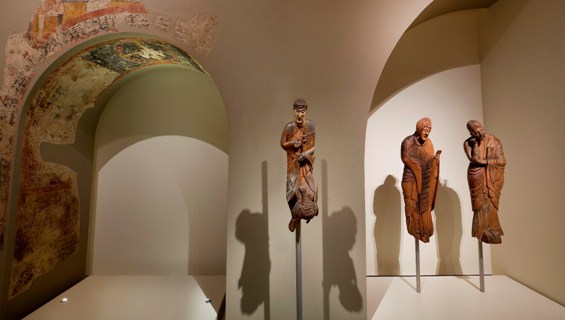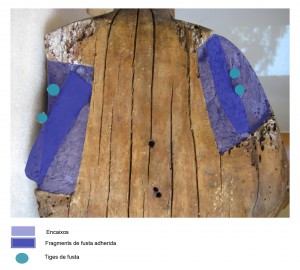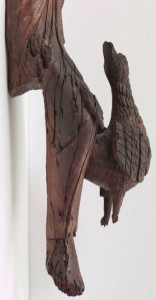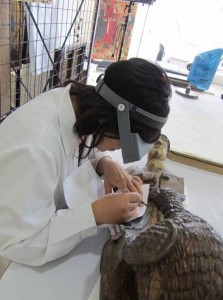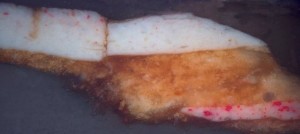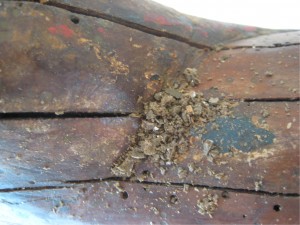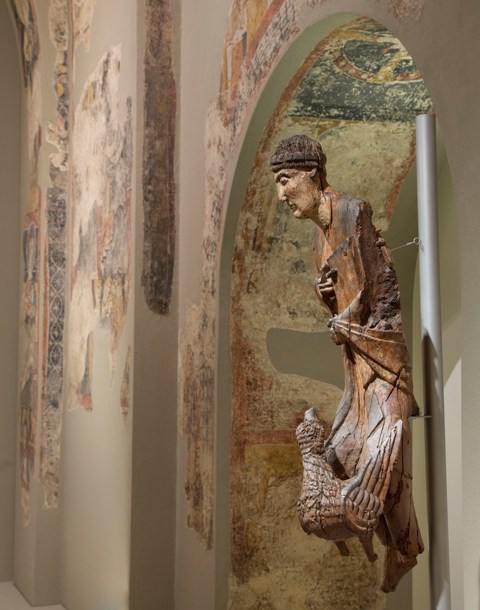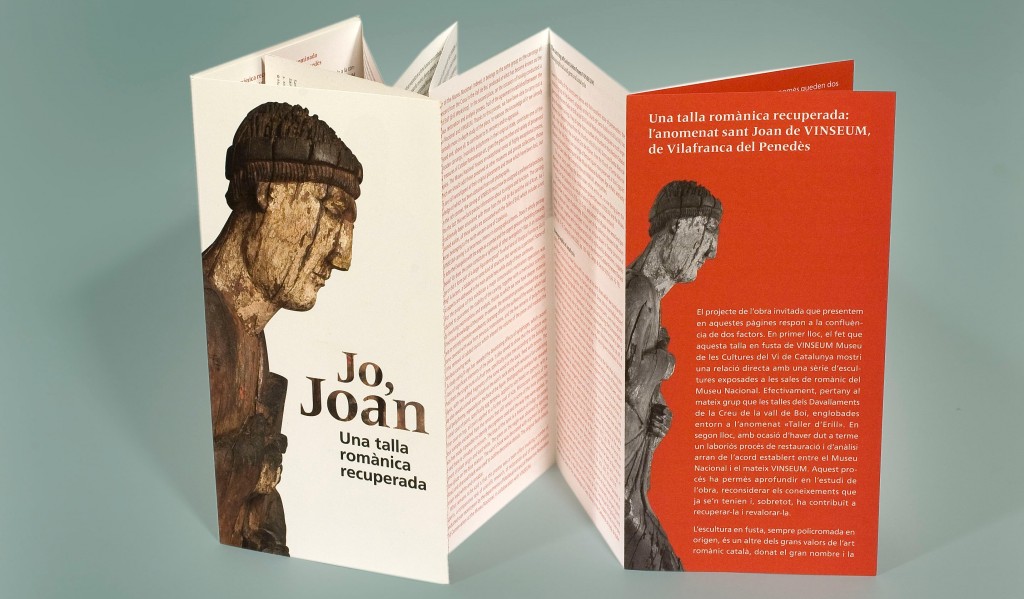Mireia Mestre
Few would guess from which institution comes the Romanesque woodcarving of Saint John the Evangelist that is currently exhibited as a guest work at the Museum Nacional d’Art de Catalunya. An important art collector, the provost from Vilafranca Manuel Trens, a priest who was also director of the Museum Diocesà de Barcelona, donated the sculpture to the museum of Vilafranca del Penedès in 1972. It is now Vinseum (Museum of the cultures of Wine), which many of us associate with objects to do with winegrowing and wine production but which also has interesting art collections.
A step back in time of over 40 years
Seldom are we lucky enough to have written documentation about the conservation-restoration processes that were performed in Catalonia before 1980 on works of art in museums. That year, Barcelona City Council organized an exhibition, Barcelona Restores, curated by Joan Ainaud de Lasarte, in which works from all over Catalonia, restored by the municipal services of Barcelona in the workshops of the Palau Nacional, were exhibited in the Saló del Tinell. Unquestionably, this exhibition and the well-researched catalogue marked a turning point in the world of conservation-restoration in Catalonia.
One of the works displayed in it was the woodcarving of Saint John the Evangelist, classified as being from the sculptural workshop known as ‘from Erill la Vall’. The Barcelona municipal restoration services restored it in 1973, a year after Mons. Manuel Trens had donated it to the museum in his hometown. In the catalogue’s text, it says that the image still had traces of polychromy on the flesh tones and the saint’s tunic. It was noted that it could have come from a baldachin with columns decorated by the four evangelists, due to the socket below the thighs that must have been used to attach it to the bracket.
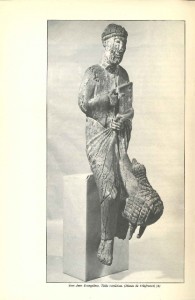
The carving of Saint John the Evangelist in 1973, before beginning the first restoration process at the Museu d’Art de Catalunya
The sculpture was mutilated and degraded due to the attack of woodworm, besides the presence of deep cracks in the bracket. At that time the restoration consisted of a chemical insect disinfestation and a consolidation of the wood with acrylic resin and liquid wax that was used to fill the woodworm holes and the cracks. Finally, a coat of liquid wax was also applied to the entire surface in order to homogenize and protect it. The text was illustrated by two photographs prior to the restoration work and one during it.
The restoration of the woodcarving de Saint John today
Forty years later, the people in charge of Vinseum asked the Museu Nacional to do a new insect disinfestation of the work, a project for an in-depth study and a restoration. In exchange the museum proposed to exhibit the Saint John the Evangelist, once it had been restored, in the area of the Descents from the Cross from Boí. The formula of exhibiting a “guest work” has the virtue of facilitating dialogue between the work from elsewhere and those in the collection that makes it necessary to review and rethink the works around it. For a few months, the elegant sculpture from Vinseum visits the Museu Nacional d’Art de Catalunya, changes context and rubs shoulders with other woodcarvings in the collection from the same period, of a similar provenance and which may even have been done by artists from the same sculpture workshop, usually dated to the end of the twelfth century.

The work exhibited in the Museu Nacional in the area of the groups of the Descent from the Cross from the Vall de Boí
This second visit of the Saint John to the Museu Nacional workshops was the opportunity to carry out a scientific examination of the material and technical aspects of the carving, comparing the results with those of other images by the same workshop that are conserved in the museum and elsewhere.
The X-ray study shows that the sculpture was monoxyle. Carved from a pear tree trunk, it has traces of clothing in the area of the neck and two pieces of the same pear tree wood added to the shoulders, attached with thorns. The conservators-restorers put forward the hypothesis that these bits of wood might correspond to the removal of two wings that had broken. This means that Saint John could have been shown winged, pointing to the book with his index finger and accompanied by the eagle, this evangelist’s symbol.
With the analyses, the pigments used, how they were agglutinated, and the way they were applied, have been determined. The pigments identified are typical of Romanesque production: lead white, carbon black, minium, cinnabar red, orpiment, indigo-woad and pastel, besides the odd organic colorant. All of them were agglutinated with tempera, applied in coats over a preparation of lime in two superimposed layers.
It has likewise been made clear that the face of Saint John is repainted with a flesh tone of lead white and vermillion, agglutinated with oil, and applied over a new lime preparation. This much later repolychroming, which is also visible in the red colour of the clothing, was a habitual practice in the images that were for the purposes of worship and had to be kept in good condition.
The latest process of restoration work at the Museum Nacional has thus consisted of:
- a treatment of insect disinfestation by anoxia
- a cleaning of the traces of polychromy
- the elimination of beeswax from earlier restorations in the cracks, the holes and the entire surface of the wood that gave the woodcarving a polished, shiny appearance
- the added lime stuccoes that affected the volumes and the careful carving work have also been removed
- it was finished with a volumetric repair, with wood paste, to fill and level the numerous woodworm holes
- and minimal repair work of the colours has been done
For the exhibition, we have published a short monograph I, John: A Romanesque Woodcarving Recovered, coordinated by the exhibition curator, Jordi Camps.
Related links
Exhibition Catalogue I, John: A Romanesque Woodcarving Recovered
Descents from the Cross of the collection of the Museu Nacional
Virgin and Saint John of the Descent from the Cross from Erill la Vall
Figures of the Descent from the Cross from Santa Maria de Taüll
Conservació preventiva i restauració

